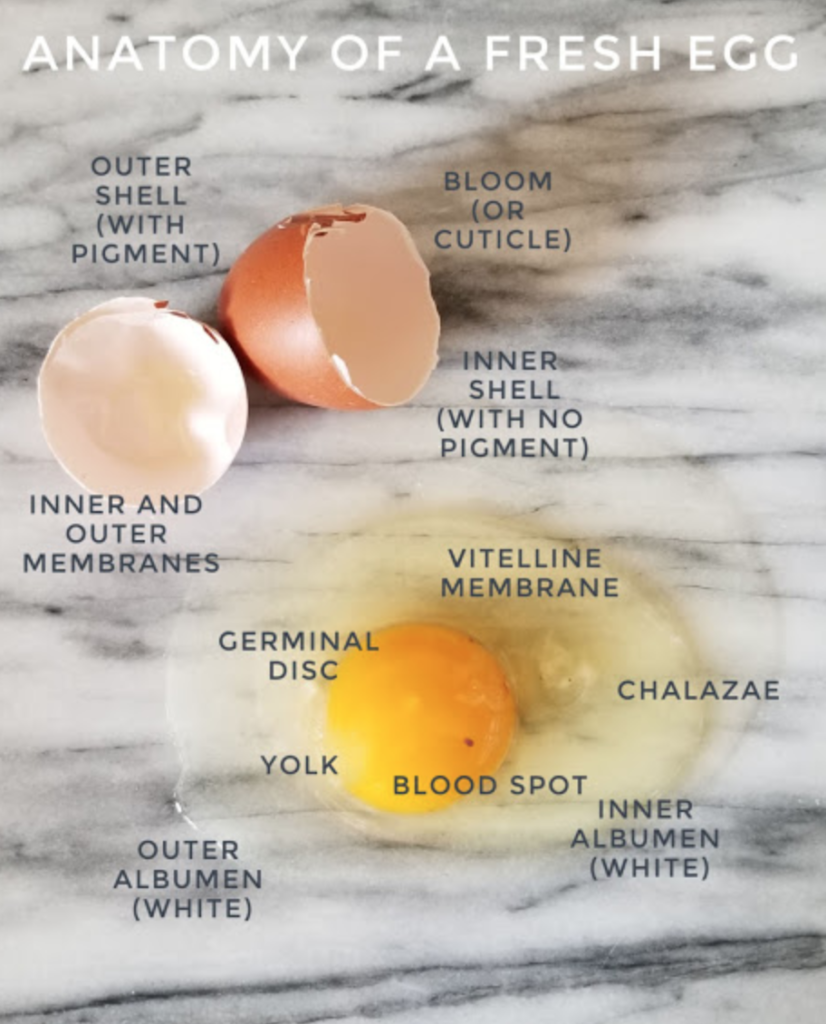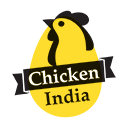
The egg is a nutritional powerhouse due to its unique mix of essential vitamins, minerals,
fatty, and amino acids. The components and their functions of eggs are listed below:
- EGGSHELL: Porous Outer shell of an egg composed of calcium carbonate, protects the egg while regulating the passage of air and moisture through the egg.
- BLOOM/CUTICLE: Water-soluble invisible coating which seals porous eggshells and helps keep out bacteria and dust. With time, it dries and limits the airflow inside an egg, leading to the formation of air sacs, which are essential in the embryo’s growth. Washing removes this layer, making eggs lose freshness quicker.
- INNER AND OUTER MEMBRANES: Strong, thin transparent film-like sacs made with keratin which surround the albumen and protects the egg from bacterial infiltration and excessive moisture loss. As egg cools down, the outer membrane sticks to the eggshell while the inner layer holds the albumen.
- AIR CELL: Pocket of air formed between inner and outer membranes to account for the loss of moisture through the eggshell with time.
- CHALAZAE: Edible ropelike, white strands observed at both ends of the yolk used to keep it centered and in its place. It dissolves with time.
- ALBUMEN (EGG WHITE): Fresh eggs have cloudy, more viscous, tighter albumen because of carbon dioxide and turns into a transparent liquid with time. All the four layers, i.e., Inner thin, Inner Thick, Outer thick, Outer thin albumin layers become watery and indistinguishable as the eggs mature. It contains half of the egg protein content and nutrients like Niacin, Riboflavin, Magnesium, Potassium, Sodium, and no cholesterol.
- VITELLINE MEMBRANE: Sturdy membrane encasing the yolk, holding it together, help in preventing egg yolk mottling.
- GERMINAL DISK (BLASTODERM): A small white spot found on the yolk surface leading to the center of yolk through a thin channel facilitating in fertilization. The fertilized egg has many concentric rings like bullseye around the germinal disk.
- BLOOD SPOT: Tiny red speck, virtually a blood vessel that broke during egg formation.
- YOLK: A nutritionally dense cholesterol-containing yellow substance that contains almost half of protein, vitamins, and minerals such as Vitamin A, D, B6, K, Calcium, and antioxidants. Based on the hen breed, its color can vary from a hint of yellow to deep orange.
Now you know! The next time you crack open a fresh egg, you’ll be able to spot all the various parts that make up the egg.
